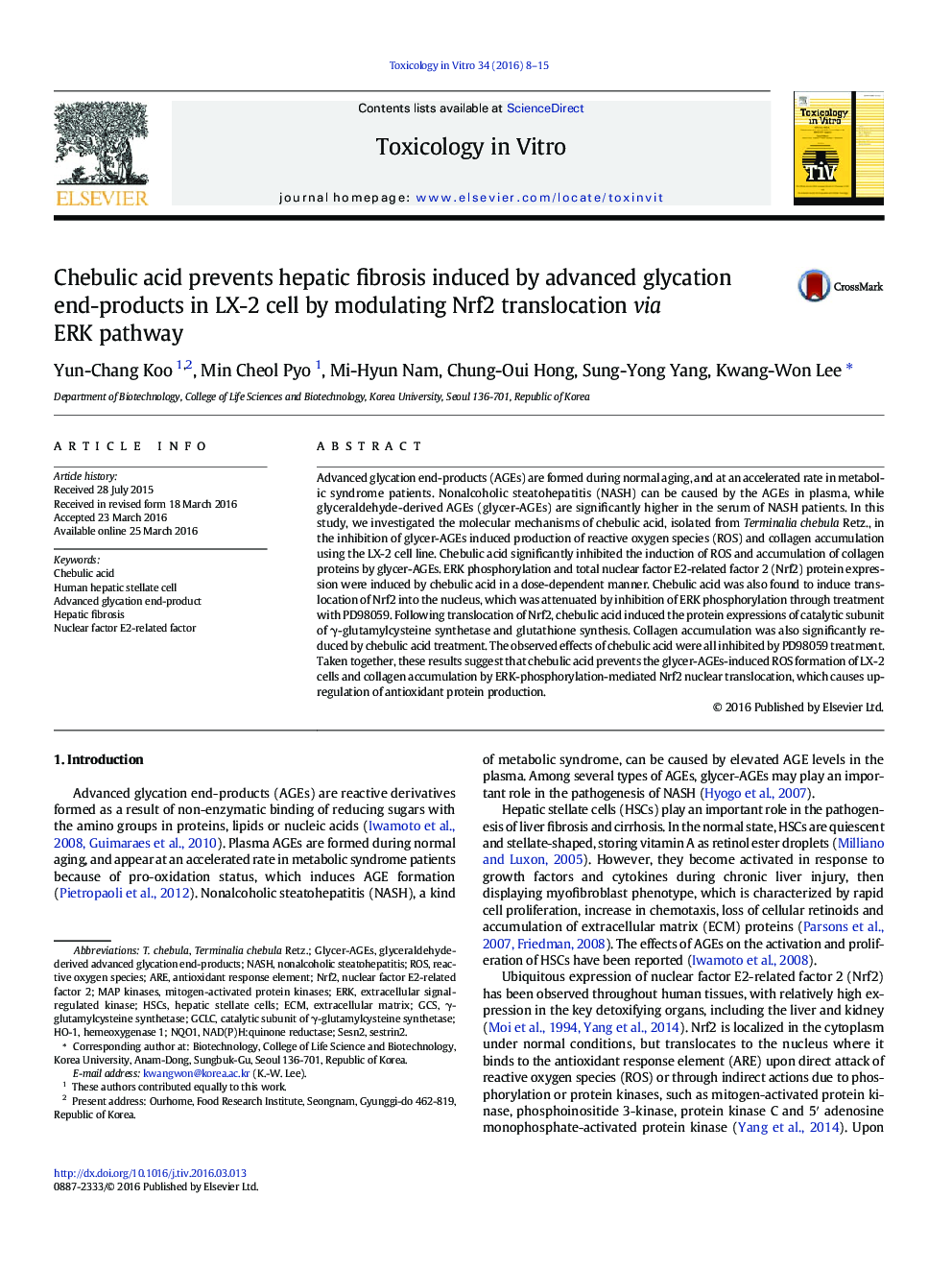| Article ID | Journal | Published Year | Pages | File Type |
|---|---|---|---|---|
| 5861066 | Toxicology in Vitro | 2016 | 8 Pages |
Abstract
Advanced glycation end-products (AGEs) are formed during normal aging, and at an accelerated rate in metabolic syndrome patients. Nonalcoholic steatohepatitis (NASH) can be caused by the AGEs in plasma, while glyceraldehyde-derived AGEs (glycer-AGEs) are significantly higher in the serum of NASH patients. In this study, we investigated the molecular mechanisms of chebulic acid, isolated from Terminalia chebula Retz., in the inhibition of glycer-AGEs induced production of reactive oxygen species (ROS) and collagen accumulation using the LX-2 cell line. Chebulic acid significantly inhibited the induction of ROS and accumulation of collagen proteins by glycer-AGEs. ERK phosphorylation and total nuclear factor E2-related factor 2 (Nrf2) protein expression were induced by chebulic acid in a dose-dependent manner. Chebulic acid was also found to induce translocation of Nrf2 into the nucleus, which was attenuated by inhibition of ERK phosphorylation through treatment with PD98059. Following translocation of Nrf2, chebulic acid induced the protein expressions of catalytic subunit of γ-glutamylcysteine synthetase and glutathione synthesis. Collagen accumulation was also significantly reduced by chebulic acid treatment. The observed effects of chebulic acid were all inhibited by PD98059 treatment. Taken together, these results suggest that chebulic acid prevents the glycer-AGEs-induced ROS formation of LX-2 cells and collagen accumulation by ERK-phosphorylation-mediated Nrf2 nuclear translocation, which causes upregulation of antioxidant protein production.
Keywords
GCsNuclear factor E2-related factorNAD(P)H:quinone reductaseSesn2T. chebulaSestrin2GCLCHSCsNQO1ECMERKHO-1Nrf2ROSγ-glutamylcysteine synthetasenonalcoholic steatohepatitisHepatic stellate cellsnuclear factor E2-related factor 2antioxidant response elementHepatic fibrosisExtracellular matrixAdvanced glycation end-productNash AREHemeoxygenase 1MAP kinasesextracellular signal-regulated kinasemitogen-activated protein kinasesReactive oxygen species
Related Topics
Life Sciences
Environmental Science
Health, Toxicology and Mutagenesis
Authors
Yun-Chang Koo, Min Cheol Pyo, Mi-Hyun Nam, Chung-Oui Hong, Sung-Yong Yang, Kwang-Won Lee,
